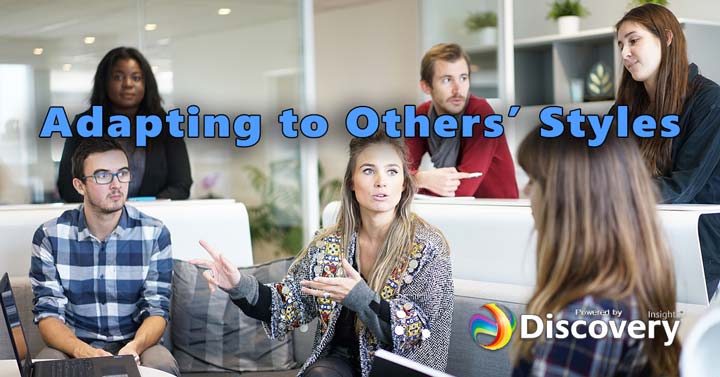Managing the Color Energies

Understanding the different personality types of a team is important for managers not only so that they can build an effective team, but also so that they can gain insights into how to manage the color energies of the team. Today I’ll be discussing tips and techniques for managing the color energies in the Insights Discovery system.
Managing Cool Blues
People who are cool blue in temperament are thoughtful and like to plan out events and activities in advance. Typically, they will be organized and know their processes very well, following instructions exactly. But one challenge in managing them is they are not the most adaptable of people; they need to be given time to consider and process new information and ideas. If a new concept or model is introduced to a cool blue, they may not be particularly enthusiastic about the change straight away. This does not mean that they are rejecting the change or that they will be unable to cope with it, but they may require a few days to adapt to the new mindset required of them.
One practical tip on managing cool blues is to give them a heads up (wherever possible) of new issues that may arise in the future. A manager who can let their cool blue team members know in advance that changes will be forthcoming – for example, that this year an annual process will be changing, or that brainstorming sessions will be moving from regular small meetings to occasional large meetings – will find that the cool blue person has planned and anticipated the change and is more ready for it. This gives two advantages: firstly, the blue person will be able to contribute useful ideas as they have had time to consider and aren’t being forced to respond off the cuff, and secondly, they will be more positive about adapting to change when they know to expect it.
Managing Earth Greens
Earth green people are driven by their values, which often focus around sharing, harmony, and fairness. This means that in order for a manager to win the loyalty of an earth green person, they must explicitly demonstrate their even-handedness and explain their reasoning. For example, if a manger is planning to end a contract with a vendor and to move to another vendor, it would be wise to let the earth green members of their team know about why they are making this change. Even when it is not strictly required for the green person to know about the reasoning to perform their job, they will be more supportive and enthusiastic if they see that their manager has good reasons for making this choice.
This is because earth green people care deeply about personal relationships with co-workers. If the green person perceives their organization as being capricious or opaque about their motives, they will not trust them and will not perform well. And this interest is not self-centered: a green can perceive a colleague being treated badly by a manager to be as damaging as if it were happening to them. To build the best relationship with an earth green, a manager should be as fair as possible and be transparent about that fairness.
Managing Sunshine Yellows
The highly sociable sunshine yellow type is passionate, enthusiastic, and has a strong vision of the future. If a manager wants to sell their team on a new concept or process, then getting the sunshine yellow members of the team on board is key. These people will then cheerlead for the idea and get everyone else in the team to accept and embrace the new concept too. If a person who can drum up energy and get everyone involved is required, then the sunshine yellow is the type to turn to.
However, sunshine yellow types can be distractible and disorganized. When managing such a person, it is important to clearly lay out the essential requirements of a task and not let the person focus only on the “fun” parts of a job. Also, sunshine yellows can have a tendency to overwhelm other less outgoing team members, especially if there are a high proportion of yellows on a team and their visions are closely aligned. In this case, encourage sunshine yellows to pull back sometimes to allow space for others to express their ideas.
Managing Fiery Reds
Fiery reds are active and hands-on, and they like to find the most efficient way of performing their tasks. This means that they can be very adaptable and amenable to change, as long as their manager can demonstrate to them how the new system will create a better outcome than the old system. Unlike cool blues, fiery reds are not interested in considering every small change in depth – they would rather learn by doing and are focused on the present moment rather than ruminating about the past or future. If a fiery red needs to learn a new skill, it is best to hand them the tools and let them puzzle through the challenge for themselves rather than trying to teach them everything in advance.
One useful but occasionally frustrating aspect of managing a fiery red is their pragmatism. They are not the type to be swept up by great oratory or to embrace an idea because it sounds new and exciting. Instead, they want to see a clear and realistic vision with concrete steps outlined that will achieve that vision. When trying to motivate a fiery red, do not focus on abstract concepts or too much big picture talk – instead, give them grounded, actionable steps which they can follow to achieve the desired goal.
This is just scratching the surface of the ways that psychometric testing can help managers interact with and motivate their team. For more information on how Discover Yourself can greatly increase your management effectiveness, contact us today HERE.





